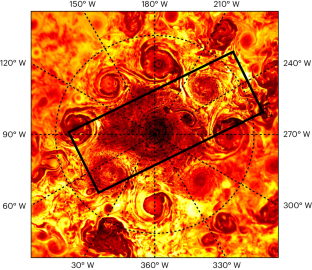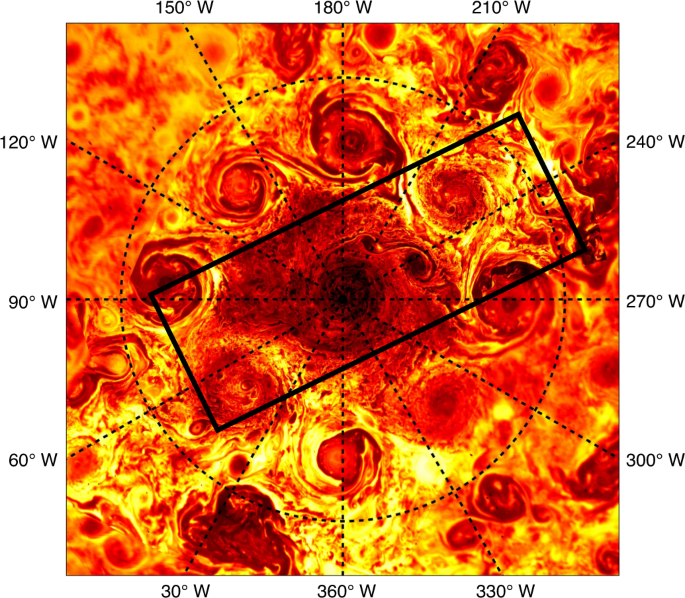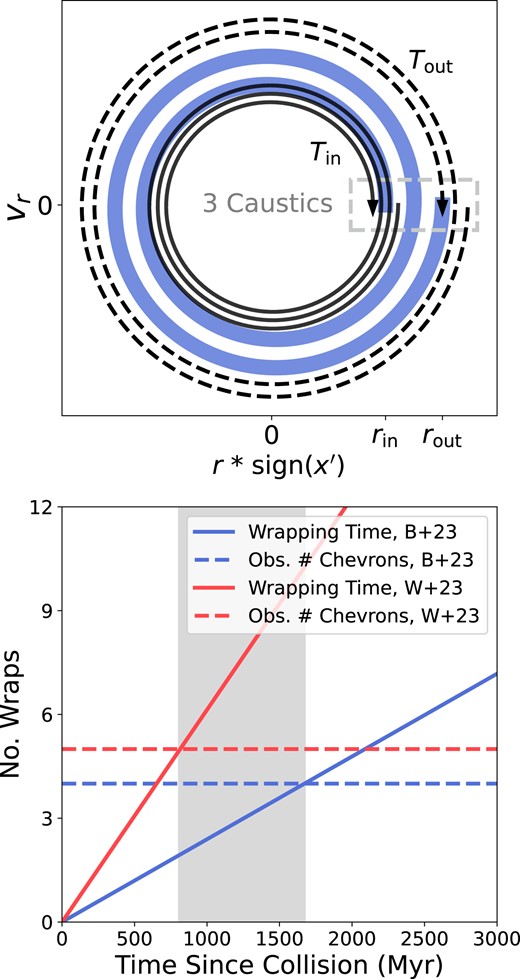2024-06-06 カリフォルニア大学サンディエゴ校(UCSD)
◆シーゲルマン博士は2018年に、木星の巨大サイクロンと海洋の乱流との類似性に気付き、これが新たな研究の発端となりました。2022年に発表された研究では、NASAのジュノー探査機による赤外線画像を解析し、地球と同様の対流が木星の嵐を維持していることを示しました。
◆最新の研究では、木星のサイクロン間のフィラメントが地球の前線と同様に機能し、嵐を持続させる役割を果たしていることが確認されました。これにより、木星の嵐が地球の大気や海洋の現象と深く関連していることが明らかになり、将来的に他の惑星の研究にも応用できる可能性があります。
<関連情報>
- https://today.ucsd.edu/story/using-oceanography-to-understand-fronts-and-cyclones-on-jupiter
- https://www.nature.com/articles/s41567-024-02516-x
- https://www.nature.com/articles/s41567-021-01458-y
木星高緯度における前線形成 Frontogenesis at Jovian high latitudes
Lia Siegelman & Patrice Klein
Nature Physics Published:06 June 2024
DOI:https://doi.org/10.1038/s41567-024-02516-x

Abstract
Frontogenesis is the process by which fronts, separating fluids of different temperatures, are generated in the terrestrial atmosphere and oceans. It is of interest to consider whether this process appears in other planetary atmospheres. Here we analyse infra-red images taken by the Juno spacecraft at the Jovian poles and reveal ubiquitous vortices with a diameter of hundreds to thousands of kilometres and filaments with a width of tens of kilometres embedded in between the vortices. Our analysis shows that the filaments are dynamically active, reminiscent of terrestrial frontogenesis. Furthermore, our results indicate that Jovian frontogenesis acts in concert with moist convection, with the former mechanism favouring the development of cyclones and the latter the development of anti-cyclones. Even though moist convection is the main driver, frontogenesis accounts for a quarter of the total transfer of potential to kinetic energy, enhancing the upscale transfer of energy to larger vortices. Frontogenesis contributes 40% to the vertical heat transport, efficiently redistributing heat from Jupiter’s interior to its tropopause. This study highlights the broad range of interacting scales from tens to thousands of kilometres and the diverse physical mechanisms active at Jovian high latitudes.
木星高緯度域における湿潤対流によるスケールアップしたエネルギー移動 Moist convection drives an upscale energy transfer at Jovian high latitudes
Lia Siegelman,Patrice Klein,Andrew P. Ingersoll,Shawn P. Ewald,William R. Young,Annalisa Bracco,Alessandro Mura,Alberto Adriani,Davide Grassi,Christina Plainaki & Giuseppe Sindoni
Nature Physics Published:10 January 2022
DOhttps://doi.org/10.1038/s41567-021-01458-y

Abstract
Jupiter’s atmosphere is one of the most turbulent places in the solar system. Whereas observations of lightning and thunderstorms point to moist convection as a small-scale energy source for Jupiter’s large-scale vortices and zonal jets, this has never been demonstrated due to the coarse resolution of pre-Juno measurements. The Juno spacecraft discovered that Jovian high latitudes host a cluster of large cyclones with diameter of around 5,000 km, each associated with intermediate- (roughly between 500 and 1,600 km) and smaller-scale vortices and filaments of around 100 km. Here, we analyse infrared images from Juno with a high resolution of 10 km. We unveil a dynamical regime associated with a significant energy source of convective origin that peaks at 100 km scales and in which energy gets subsequently transferred upscale to the large circumpolar and polar cyclones. Although this energy route has never been observed on another planet, it is surprisingly consistent with idealized studies of rapidly rotating Rayleigh–Bénard convection, lending theoretical support to our analyses. This energy route is expected to enhance the heat transfer from Jupiter’s hot interior to its troposphere and may also be relevant to the Earth’s atmosphere, helping us better understand the dynamics of our own planet.



